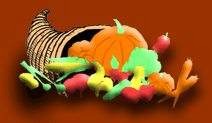T-Clock Inspection
You should perform a complete inspection of your bike on a monthly basis. At the March meeting, I reminded everyone of the T-CLOCK inspection method.
T = Tire & Wheels:
Inspect your tires prior to every ride in case you picked up something on your last ride that
could cause a problem. Check air pressures with a tire gauge and manually inspect
the rest of your tires and wheels, including your brake pads and calipers.
C = Controls and cables:
Make sure your cables are properly connected, are not worn, and do not interfere with steering.
If it has been a while since you rode, make sure all of the levers and pedals operate smoothly.
L = Lights and electrics:
Have a buddy confirm that all of your lights are working properly.
Also confirm that your CB is working properly before you ride.
Check these items before each ride.
O = Oils and fluids:
Check your fluid levels at least monthly.
C = Chassis and drive train:
Visually check the bike’s frame for obstructions, cracks, etc.
K = Kickstand:
Make sure it moves freely and proper function of engine-cutoff feature (if applicable).
A properly maintained bike is a safer bike. So get back to basics
and remember to inspect your bike.

